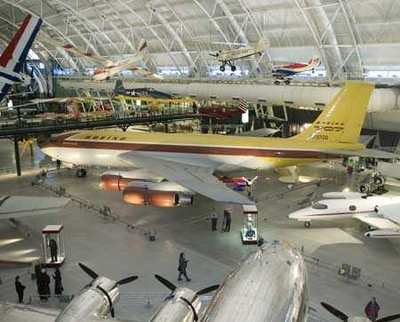Sat, May 17, 2014
This Airplane Can Take Credit For Revolutionizing The Airline Business
May 14th marked the 60th anniversary of the rollout of Boeing’s airliner research airplane often referred to as the “Dash 80.” This airplane can take credit for revolutionizing the airline business and providing the military with a workhorse that continues in service today; that is the KC-135 refueling airplane. While the Dash 80 has a physical resemblance to the Boeing 707 airliner, they are not the same. Often referred to as the prototype for the 707; it was more of a research vehicle used for the development of the airliner.

Most followers of aviation history notice that this famous airplane was referred to as the Dash 80, and not the 707. This was intentional on Boeing’s part to mislead the competition. Boeing’s airliner in production at the time of the Dash 80 development was the piston engine powered model 377 Startocruiser. The Startocruiser was actually an offshoot of Boeing’s model 367 which was the military transport designated the C-97. The actual designation of the airplane that became the 707 was the Boeing model 367-80 to disguise the fact it was a jet. This resulted in two names being applied simultaneously to the same airplane. Boeing technicians referred to their future airliner as the Dash 80, and the marketing side of Boeing referred to it as the 707.
Boeing invested $16 million of its own funds to build this prototype/research airplane and it was a gamble that paid off. Aerodynamically, it was actually based on Boeing’s B-47 jet bomber. It was equipped with the civilian version of the military Pratt and Whitney J57 engine which in its civilian life was called the JT3. Later versions of the 707 airliner models used the Pratt and Whitney JT3-D turbofan engines.
The British DE Havilland Comet had preceded Boeing’s entry into the jet airliner market but had encountered problems early on when structural weakness in the fuselage caused the loss of three Comets while operating in commercial service. The Comet had its engines buried in the wing root of the airplane and Boeing saw this as a potential problem because a failure of one engine could affect the adjacent engine. That’s why the Boeing design separated the engines into pods hanging beneath the wing.
The Dash 80 matured into numerous 707 model variations that include the VC-137 which was the first jet powered Air Force One. It continues in operation today as the KC-135 with twice upgraded engines and numerous improvements. The Dash 80 itself continued with Boeing as a flying test bed until 1969. It is now featured at the National Air and Space Museum at Washington Dulles International Airport where it is listed as being one of the 12 most significant aircraft of all time.
(Image from file)
More News
Aviation Governance Secured...At Least For a While The National Business Aviation Association similarly applauded the passage of the FAA's recent reauthorization, contentedly recou>[...]
Emphasis On Growing The Future of Aviation Through Concentration on 'AFFORDABLE FLYERS' It's been a number of years since the Latest Edition of Jim Campbell's HUGE SportPlane Resou>[...]
Amazilia Aerospace GmbH, Develops Digital Flight Control, Flight Guidance And Vehicle Management Systems Textron eAviation has acquired substantially all the assets of Amazilia Aer>[...]
Honeywell's Primus Brings New Tools and Niceties for Hawker Operators Hawker 4000 business jet operators have a new installation on the table, now that the FAA has granted an STC f>[...]
Company Celebrates Niche-but-Important Advancement in Industry Standards Echodyne has announced full integration of its proprietary 'EchoFlight' radar into the e American Aerospace>[...]
 Bolen Gives Congress a Rare Thumbs-Up
Bolen Gives Congress a Rare Thumbs-Up The SportPlane Resource Guide RETURNS!!!!
The SportPlane Resource Guide RETURNS!!!! Buying Sprees Continue: Textron eAviation Takes On Amazilia Aerospace
Buying Sprees Continue: Textron eAviation Takes On Amazilia Aerospace Hawker 4000 Bizjets Gain Nav System, Data Link STC
Hawker 4000 Bizjets Gain Nav System, Data Link STC Echodyne Gets BVLOS Waiver for AiRanger Aircraft
Echodyne Gets BVLOS Waiver for AiRanger Aircraft



